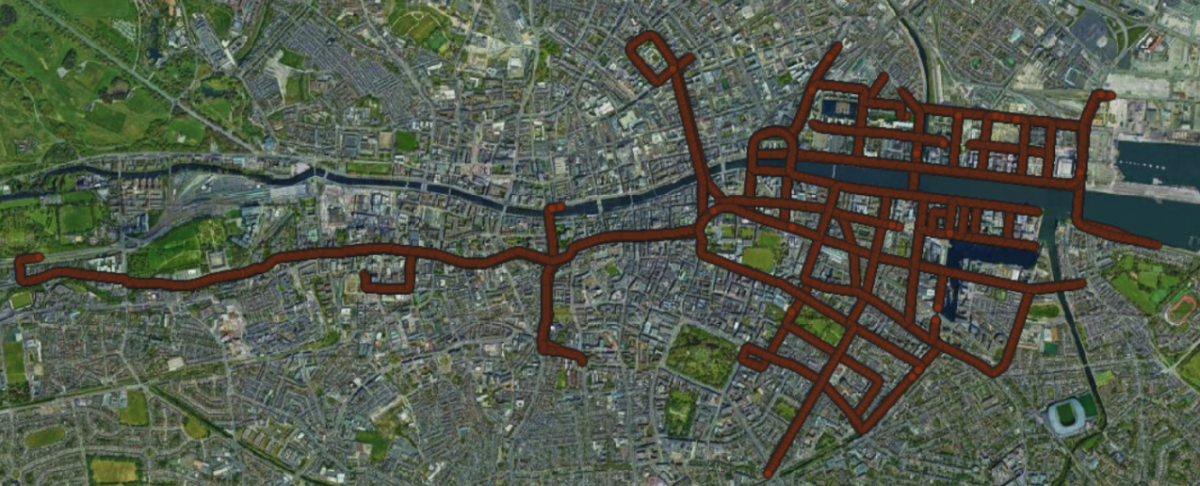Smart cities all over the world are using Artificial Intelligence (AI) and remote sensing technologies to create a digital twin of their public infrastructure in order to plan, operate and manage the builtenvironment more effectively.
In March 2020, at the start of the pandemic when streets were quiet, Smart Dublin collaborated with Murphy Geospatial to survey the Docklands area of the city using mobile mapping technology to capture the data which was geospatially verified by geomatics professionals. This rich dataset totalling 450GBytes of imagery and point clouds was shared with a team of computer vision researchers in the SFI ADAPT Research Centre for AI-Driven Digital Content Technology.

Dublin Docklands Survey Area
The AIMapIT research team analysed the high resolution imagery from 7 camera views captured at 3metre intervals using the AI-powered computer vision system, AIMapIT – an innovative AI solution for discovery, detection and GPS mapping of stationary objects. The goal was to detect assets of interest such as traffic signs, bins, and storm drains and assign accurate gps coordinates to each asset detected in the imagery, thereby creating a geospatial record of these assets which can then be processed by other information systems for effective planning, operations and maintenance.
The ADAPT research team, spread across three of its institutions – Trinity College Dublin, Maynooth University and Dublin City University – currently funded by Enterprise Ireland’s Commercialisation Fund, are investigating the potential of this technology in the Geographic Information Systems (GIS) market globally.

AIMapIT Commercialisation Team
Speaking about the potential for this technology, AIMapIT Project Lead Julie Connelly said: “Having access to high-resolution imagery as well as the lidar point clouds was the perfect opportunity for us to test our solution on mapping of city assets”.
The case study involved training object detection models on the assets of interest and using the unique geotagging capability of AIMapIT, assigning an accurate GPS coordinate to the detected assets. “Having an up to date register of all the city infrastructure will be crucial going forward to improve the efficiency of planning new infrastructure deployment and the cost-effective operations and maintenance of
existing assets”.
A bespoke dataset created by the research team showed very high performance on the storm drain asset type, with a recall of 93% and precision of 95%, thanks in part to the fact that the imagery was collected during lockdown in 2020 when the roads were relatively free of traffic and hence, the drains were fully visible in the imagery. An exact location for all storm drains would help speed up deployment of
manpower and resources to areas in need of assistance during e.g. flooding events, something that is expected to become more of an issue in years to come.
With thanks to the Smart Dublin team, Murphy Geospatial and academic collaborators Prof. Rozenn Dahyot (MU) and Dr. Vladimir Krylov (DCU) in Enterprise Ireland Commercialisation Fund project CF-2019-1092-I.
For more information about AIMapIT, please contact info@aimapit.com